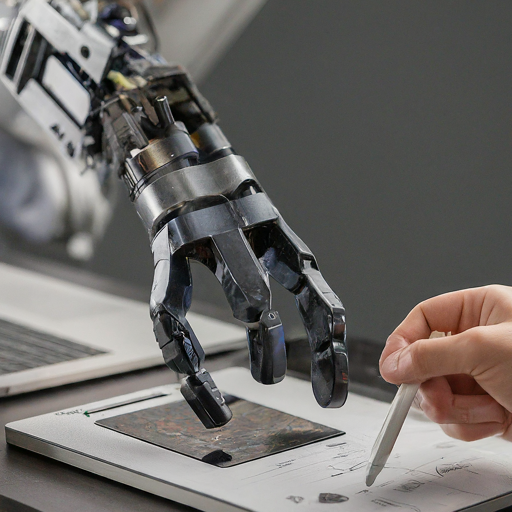
DDD Blog
Our thoughts and insights on machine learning and artificial intelligence applications
Welcome to Digital Divide Data’s (DDD) blog, fully dedicated to Machine Learning trends and resources, new data technologies, data training experiences, and the latest news in the areas of Deep Learning, Optical Character Recognition, Computer Vision, Natural Learning Processing, and more.
For Artificial Intelligence (AI) professionals, adding the latest machine learning blog or two to your reading list will help you get updates on industry news and trends.
Get early access to our blogs

Deep Learning in Computer Vision: A Game Changer for Industries
Neural networks built on deep learning algorithms simplify human processes, reduce costs, study market trends, and understand user behavior. In this blog, we will discuss the application of deep learning in computer vision and how it's transforming various industries.

The Evolving Landscape of Computer Vision and Its Business Implications
As computer vision is expanding AI algorithms are improving its ability to recognize objects, faces, and even human emotions. In this blog, we will explore how computer vision works and how it’s evolving future businesses.

The Art of Data Annotation in Machine Learning
Data Annotation has become a cornerstone in the development of AI and ML models. In this blog, we will explore more about data annotation and its use cases in machine learning.

Navigating the Challenges of Implementing Computer Vision in Business
To quantify ROI businesses should consider computer vision challenges for data quality, overall costs, hardware requirements, and stronger planning to obtain measurable results.

The Impact of Computer Vision In E-Commerce: Enhancing Customer Experience
This blog will discuss computer vision in eCommerce and how it's enhancing customer experience and store owners.

5 Best Practices To Speed Up Your Data Annotation Project
5 Proven steps to speed up your data annotation project to create effective AI models. Using ground truth, annotation type, a combination of AI and human intelligence, outsourcing, and adopting the latest technologies.

Computer Vision Trends That Will Help Businesses in 2024
When it comes to artificial intelligence, computer vision is fast gaining immense ground. It's estimated to grow from $9.03 billion in 2021 to $95.08 billion in 2027! If you run a business looking to take advantage of an AI human vision system in the coming days, there are specific trends to keep in mind. Some of which we will mention in this article.

Enhancing Safety Through Perception: The Role of Sensor Fusion in Autonomous Driving Training
Autonomous vehicles need to interpret their surroundings accurately and make informed decisions in real-time. Sensor fusion, a cutting-edge technology, holds the key to improving perception and safety in autonomous driving.

High-Quality Training Data for Autonomous Vehicles in 2023
How is this training data obtained? Who can help you gather high-quality training data for autonomous vehicles in 2023? In this guide, we'll discuss all of that. So, let’s begin!

How OCR and Machine Learning Improve Document Processing
OCR and ML technologies have become increasingly popular in the last few years, enabling organizations to automate repetitive and time-consuming manual tasks. In this article, we’ll explore the benefits of OCR and ML in document processing and how they can help organizations to improve their workflow and productivity.

Everything You Need To Know About Computer Vision
Computer vision has made it possible to detect and label objects, being able to accomplish tasks that humans can’t.

4 Major Regulatory Hurdles in the Autonomous Driving Space
Regulations for autonomous driving typically focus on two key areas: safety and performance. This article is mostly focused on the regulatory and legislative hurdles regarding safety of automated driving and autonomous vehicles.

Determining The New Gold Standard of Autonomous Driving
Emerging standards are beginning to regulate how manufacturers approach navigation, safety, and AD modeling quality. These standards also influence policy creation, technology use, and the general framework for AD systems. Creating standard systems for these AD models will lead to a more uniform approach toward autonomous driving models.

The Future Of Retail: How Computer Vision Is Modernizing Retail
Computer vision in retail has become a necessity for most companies in today’s times. To give their customers a better and enhanced experience, retailers are adopting computer vision-led solutions.

How Data Labeling and Annotation Are Fueling Autonomous Driving’s Global Movement
Autonomous driving is becoming more prevalent worldwide. With that growing interest comes an emerging need for experts who can develop the tools and processes necessary for driver behavior monitoring, self-parking, motion planning, and traffic mapping.

4 Advantages of Human-Powered Data Annotation vs Tools/Software
Once you've created a clean training data set for supervised learning, the story isn't over. Human intervention is needed to assess how well the AI can correctly identify diseased crops in the future.

Everyday Applications You Didn’t Realize Were Powered by NLP
“Siri, what is a virtual assistant?”
If you’re like most people, you talk to your virtual assistants, like Siri or Alexa and even when you are on the line with automated call centers."

Why Data Annotation Software Still Needs a Human Touch
"Although AI has advanced enormously over the past decade, involving humans in its development is still essential if premium results are required.
Here we take a look at how AI is trained using test data and how human-powered data annotation and data labeling adds significant value to the outcomes that AI delivers. "

Natural Language Processing Is Impossible Without Humans
The holy grail of AI is natural language processing (NLP). Teaching machines to accurately and reliably understand and generate human language ushers in a revolution with boundaries that are hard to envision.

Data Bias: AI’s Ticking Time Bomb
We’ve all seen the headlines. It’s big news when an AI system fails or backfires, and it’s an awful black eye for the organization the headlines point to. Most of the time these headlines can be traced back to issues with the AI model’s training data.
Sign up for our blog today!

